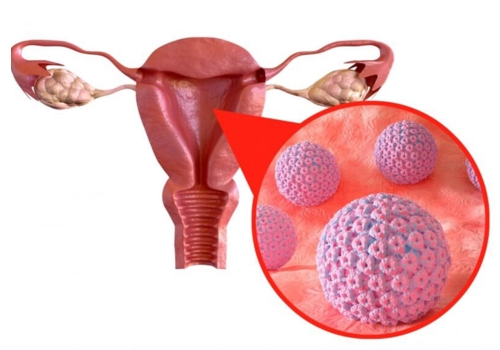Vaginal Bleeding or Spotting After Sex: This is one of the most important and early symptoms of cervical cancer that often gets missed.
Cervical Cancer

What Causes Cervical Cancer?
The cervix is a part of the female reproductive tract, located at the lower part of the
uterus, serving as the entrance to the uterus. Cancer that develops in this region is
known as cervical cancer or carcinoma of the cervix. Human papilloma virus is responsible for majority of cervical cancers
Cervical cancer is the most prevalent among all gynecological cancers. According to
GLOBOCAN 2020, cervical cancer is the fourth most common cancer among women worldwide,
with 604,127 new cases and 341,831 deaths reported annually. In Indian women, it is the
second most common form of cancer after breast cancer, with approximately 160 million
women aged 30 to 59 at risk of developing this disease.
Symptoms of Cervical Cancer
Cervical cancer often goes unnoticed in its early stages as symptoms can be
subtle and easily overlooked.
However, recognizing these symptoms early
is
crucial for prompt diagnosis and treatment. Here are some key symptoms to
watch for:
-
-
Vaginal Bleeding Between Menstrual Periods: Unusual bleeding outside of your regular menstrual cycle can be a sign of cervical changes.
-
Postmenopausal Vaginal Bleeding or Spotting: Any bleeding or spotting after menopause should be promptly investigated.
-
Vaginal Discharge: Look for watery or blood-stained discharge, which may indicate cervical issues.
-
Pain in the Lower Abdomen or Low Back Pain: Persistent pain in these areas can be associated with cervical cancer.
-
Passing Blood in Urine or Stools: This symptom may occur in the advanced stages of cervical cancer.

Radiation Therapy Oncology Solutions
Advanced Oncology
Radiation Treatments
Dr Prapul Kumar Mandari
Senior Consultant Radiation OncologistWith over 8 years of experience treating all types of cancer and a history of more than 10,000 satisfied patients, Dr Prapul Kumar Mandari is recognized as one of the leading Radiation Oncologists in Hyderabad.
Stages of Cervical Cancer
Each stage reflects the extent of the cancer’s spread and helps determine the most appropriate treatment options. Early-stage cervical cancer (Stages I and II) is often managed with surgery and/or radiation therapy, while advanced stages (Stages III and IV) may require a combination of radiation, chemotherapy, and targeted therapies. Regular screening and early detection are key to managing and treating cervical cancer effectively.

-
Stage 0: Known as carcinoma in situ. Abnormal cells are present in the innermost lining of the cervix but have not invaded deeper tissues.
-
Stage I: Invasive cancer that is confined to the cervix.
-
Stage II: Cancer has spread beyond the uterus but has not reached the pelvic sidewall or the lower third of the vagina.
-
Stage III: Cancer has spread from the cervix into nearby structures or to the lymph nodes in the pelvis or abdomen.
-
Stage IV: Cancer has spread to the bladder or rectum, or to distant parts of the body.
